
scrounge: /skrounj/ informal verb: to actively seek [books] from any available source
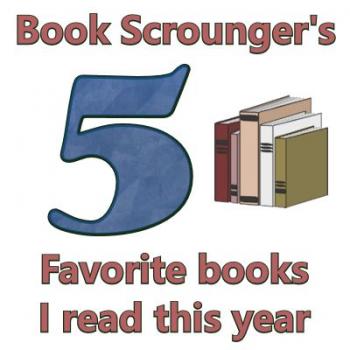
This was a great year for reading, so it's going to be really difficult to narrow it down to only five favorites, between adult books, children's chapter books, and many picture books. But I'll give it a shot. This isn't limited to books published this year, just ones I've read.
In no particular order:
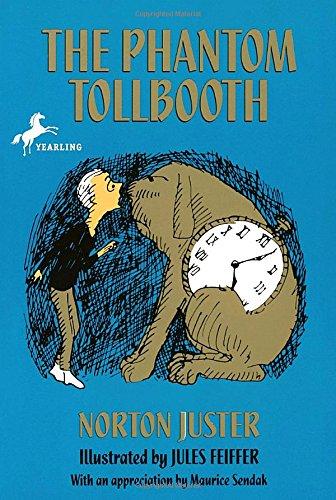
1. I'd certainly heard of The Phantom Tollbooth before, but I thought it sounded like a ghost story. But it's not -- it's basically a geek's paradise -- full of word play, fun with mathematics, etc. Have you ever wondered what it would be like if sounds had colors -- like if an orchestra played the sunrise? Or what it would be like to collect sounds? It's basically "Synesthesia: the novel." It begins with a boy named Milo who is completely bored with life, until he receives a strange tollbooth which gives him access to a land full of eccentric characters and kingdoms. He is basically learning the value and fun of education, but not in a manner than uses words like "education" at all. I definitely had fun reading this, and will look forward to reading it again, or to a child someday.
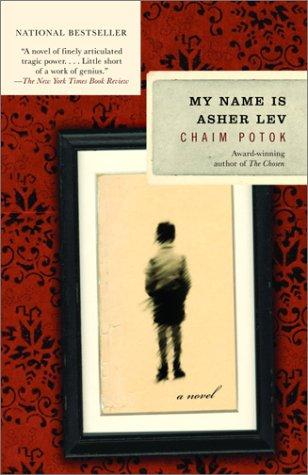
2. My Name Is Asher Lev was my introduction to Jewish author Chaim Potok. It's the story of a Hasidic boy who is compelled to draw from a young age, eventually aspiring to become a painter. But his vocation is at odds with his authoritarian culture, and his father especially is not reconciled to Asher's "gift," especially when it involves him painting things like nudes and, eventually, crucifixes. I really appreciated the exploration of the tension between Asher's religion and culture and his quest for artistic honesty. His conflict with his father is especially interesting, and I felt both characters were portrayed sympathetically, neither as a monolith. After this I read the sequel, The Gift of Asher Lev, which I didn't find quite as good but still explores similar themes with an adult Asher, in the same contemplative style. This also led me to pick up another duo by Chaim Potok: The Chosen and The Promise.
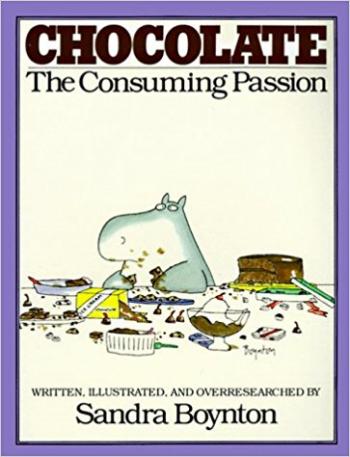
3. This was a fun one. Chocolate: The Consuming Passion was the piece that I never knew was missing from the intersection of two of my favorite pleasures: reading and chocolate. My introduction to Sandra Boynton came through her cute board books like Moo Baa La La La, so I was excited to find her wry hippos, cows, and other animals here to make smart alecky comments about chocolate. There is a fair amount of actual information in this book, including recipes, types of chocolate, and info about how chocolate is made, complete with cartoons and humorous lists and captions. It's a little bit dated in the sense that chocolate labeling has changed a bit since the 80s ("percent cacao" doesn't seem to have been a thing then), but that doesn't take away any from the hilarity. Overall, this book is a humorous celebration about how amazing chocolate is, and how you can never have too much of it and, as with books, I can get behind that.
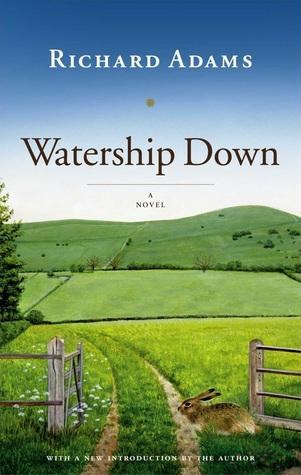
2. I probably never would have thought of the words "epic" and "rabbits" as belonging together, but Watership Down by Richard Adams is enough to change my mind. It's a long story that never feels overlong, about an intrepid band of rabbits that escapes just in time from certain death, and sets out on their own to try and start their own warren. Along the way they face many obstacles, but they don't give up. My full review can be read here.
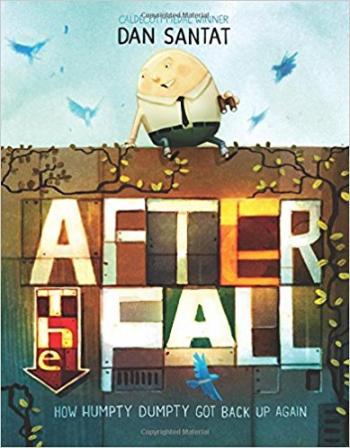
1. I wasn't going to include a picture book here, but why not? I've certainly read more of them this year than chapter books, so I'd have to say this is my favorite picture book of the year, and certainly of those published this year. After the Fall is the story of what happened to Humpty Dumpty after "the great fall." He develops a fear of heights that makes it difficult for him to do many of the things he used to enjoy. This story, though it has moments of humor, takes seriously the real-life effects that a traumatic event can produce. Because of that, it makes the ending that much sweeter and more brilliant. Full review here.
Honorable mentions: because there were so many other good ones:
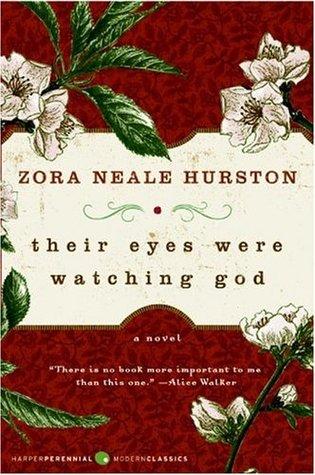
Their Eyes Were Watching God, by Zora Neale Hurston. I'll have a proper review coming sometime next year.
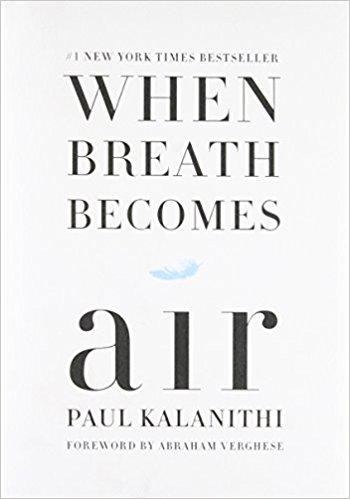
When Breath Becomes Air, by Paul Kalanithi, is a memoir by a talented neurosurgeon whose life was tragically cut short by cancer before he reached his 40s. This is his take on life, medicine, science, love, and other subjects, and how he tries to live his best life while dying.
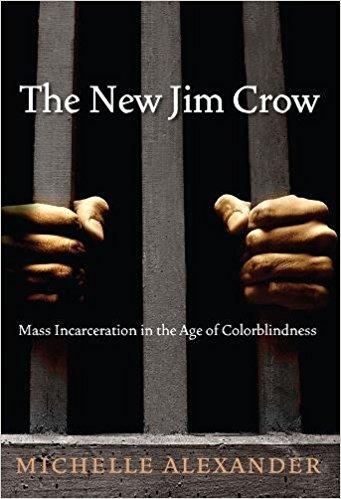
The New Jim Crow, by Michelle Alexander, is a very powerful, necessary, and eye-opening look at racial issues in the United States -- specifically, how black people (primarily men) are imprisoned at a much higher rate than white men for committing the same types of crimes.
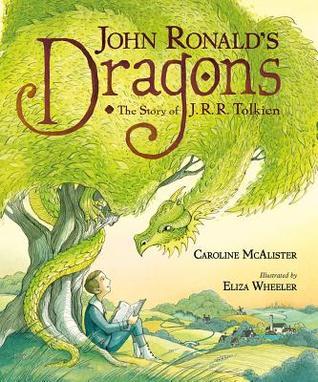
Finally! I've been waiting for this book to come along -- I just didn't realize it. John Ronald's Dragons does a wonderful job of interspersing a biography of J.R.R. Tolkien with one of the fantastical elements he's known for: dragons. Whether he's enjoying himself or experiencing great difficulties such as the loss of his mother as a boy, and World War I as a soldier, Tolkien's imagination helps him to cope.
It isn't until he takes a teaching position at Oxford that his imagination leads him to a hobbit named Bilbo Baggins, who in turn finally leads him on a long quest to his dragon. The story actually doesn't cover any details of Tolkien publishing his writing, nor does it mention The Lord of the Rings. It simply leaves him to "follow" his dragon through some familiar Middle Earth landscapes until he finds Smaug in the Lonely Mountain. The ending would probably seem abrupt if it wasn't so fantastical.
I'm sure this story will appeal to any fan of Tolkien. For children, it's a great introduction to the author of Middle Earth. While children who are unfamiliar with the series will not experience the "Yay, Bilbo!" moment that us adults do when Tolkien finally writes the first line of The Hobbit on a blank piece of paper, the dragons alone should be enough to pique the interest of a child. This story also manages to give good details without being too wordy. The end notes include a bibliography and some other detailed notes by the author and the illustrator.
Scrounged From: Our local library
Format: Hardcover
Author: Caroline McAlister
Illustrator: Eliza Wheeler
Pages: 48
Content Advisory: Tolkien's mother's death is mentioned briefly, as well as the destruction of war. The story contains many illustrations of dragons, but they are presented in an intriguing, fantastical manner and are not intended to terrify.

It's not very often that I find myself tearing up at the end of a picture book -- the ending in this case was simple enough that I almost didn't get it at first, but once it sunk in I couldn't help but think how brilliant and well done this was.
After the Fall: How Humpty Dumpty Got Back Up Again is about, as the title implies, Humpty Dumpty. It picks up where the nursery rhyme left off -- with an egg-like individual who, while the King's men managed to put most of him together (at King's County Hospital, of course), is realizing that there are parts of him that are still very much not back together. Humpty develops a fear of heights that keeps him from enjoying many of the things he likes, such as bird-watching.
But after overcoming a few setbacks, Humpty finally gains enough courage to attempt something he wasn't sure he'd ever do again: climbing that wall.
The thing is, this book could have been done so badly. How many "updated" nursery or fairy tales have come and gone that have done nothing but leave a bad taste in our mouths? How many sappy "self-esteem" or "inspirational" picture books have we sat through that, while well intentioned, gave us little more than a contrived, feel-good sort of message? Somehow those pitfalls were avoided here, at least in my opinion (and it seems many others too). Humpty soars.
Scrounged From: Our local library
Format: Hardcover
Author/illustrator: Dan Santat
Pages: 40
Content Advisory: None
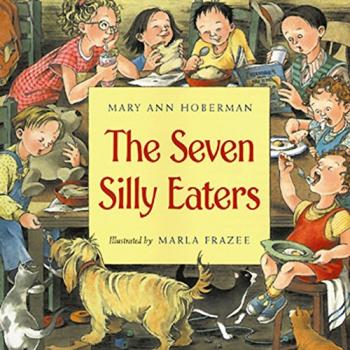
Well, after my last picture book post (about Seven Spools of Thread) this makes back-to-back posts about picture books featuring seven siblings! Odd, considering I grew up as the oldest of seven children. Given that fact, I'm amazed I hadn't encountered Mary Ann Hoberman's The Seven Silly Eaters until just a few days ago.
This story is not only sweet and silly, but it's written entirely in rhyme -- and well-written rhyme with a consistent meter and without a bunch of awkward/forced phrasing, which makes it even better. The verses chronicle the growth of the Peters family -- from one to seven children, as their mother, Mrs. Peters (who is FAR more of a saint than I am) patiently prepares more and more special foods as the family grows, since each picky eater has only one particular food that they eat (this is the silly part, because obviously no one could survive on any of those foods alone -- pink lemonade, applesauce, milk, etc. -- and I also don't think this book is suggesting that anyone should go to these kinds of lengths to indulge picky eating).
Finally, she is so worn out that she goes to bed, wondering if anyone remembers that it's her birthday the next day. Her children do, and take it upon themselves to bake something, but their attempts -- which will surely strike terror into the heart of any neat freak (or any parent, for that matter) -- seem to be futile, especially when all their foods get combined.
The ending is so cute, and I especially like the detail in the illustrations that shows Mrs. Peters practicing her cello -- the more kids she has, the less she does it, but once the children all begin learning to help out in the kitchen, we see her doing it again. I thought this story was a great combination of reality and absurdity, and certainly portrays moments that would be familiar to anyone who grew up in (or parents/parented) a large family.
After reading this, I wondered whether anyone had actually come up with a recipe to fit this story. Well, this is the internet, so of course they did: here's one blog which took the recipe right from the author's website. We haven't tried it yet, but it looks like fun and I bet the kids will especially like making something they've already read about in a book.
Scrounged From: Our local library
Format: Paperback
Author: Mary Ann Hoberman
Illustrator: Marla Frazee
Pages: 38
Content Advisory: None

Book Scrounger's note: The following is a guest review by Doug, a.k.a. Professor Puzzler.
Color and Light was a Christmas gift Book Scrounger gave me this year. Now it's two days later, and I've already finished reading it, but I intend to keep it close at hand for a long time, because it is a fantastic reference work for artists, and it has plenty of beautiful paintings to study and learn from.
This book was written by James Gurney, the creator of Dinotopia. Dinotopia is a fantasy land in which humans co-exist with intelligent dinosaurs. It has been described as a fully-imagined world on par with Tolkien's Middle Earth. I've never read Dinotopia, but Gurney's artwork is beautiful. He describes himself as an "Imaginative Realist."
As someone who is interested in both art and science, I found this book fascinating and informative. Gurney doesn't just talk through how to draw a rainbow -- he explains why rainbows exist, and how they relate to the position of the sun and the antisolar point. What? You don't know what the antisolar point is? I guess you'd better read this book!
Seriously, maybe you're wondering why you need to know the science behind rainbows, or shadows, or reflections in the water. Aside from the fact that these things are interesting, they're also very valuable if you're painting something from your imagination. If you're going to paint a rainbow in an imagined scene, you must understand how rainbows work, or you won't be able to position the rainbow correctly relative to the horizon, the sun, and the cast shadows all around. And if you can't do that, you can't make a picture look realistic. People will always look at your artwork and think, "Something's not quite right..."
Aside from the informative text, this book is filled with beautiful artwork. It begins with some of the traditional "masters," but then moves on to Gurney's own work. He includes some plein-air paintings, as well as many of his imaginative paintings involving dinosaurs and other creatures. Most of the pictures are oil paintings or watercolor paintings, but there is very little in the book that is specific to any particular medium, so if you use acrylics, colored pencils, or other media, this book will still be valuable.
I just discovered that Gurney also wrote a book titled Imaginative Realism: How to Paint What Doesn't Exist. Ah, well...I guess I've got a birthday coming up in a few months...
Scrounged From: Amazon
Format: Paperback
Author: James Gurney
Illustrator: James Gurney
Pages: 224
Content Advisory: Realistic artwork involving dinosaurs and some "creepy" creatures.

